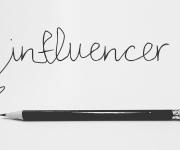What does the term ‘strategy’ mean in modern marketing? And what does a ‘strategist’ actually need to deliver? For Tracey Follows, APG Chair, they are questions that need an urgent answer. The reason? A shift in marketing toward the “executional” – a world of real-time response and short-term results.
As Follows puts it, “We are no longer in the age of the big idea. We are in the age of big data.”
The danger is that strategy becomes marginalised. Speaking at the APG Big Thinking on Strategy event in London, Follows pointed to “a culture emerging in our industry that isn’t clear on what strategy is or what it does».
Strategy, then, needs to be reinvented as those in ‘strategy’ roles adapt to new challenges and new opportunities. “Have we gone too far”, Follows asked, “or not far enough?”
The key arguments that emerged from the event were:
There’s a lot of talk about strategy, but clients are no longer engaging with strategy as part of the advertising process. Strategists need to prove a link between strategic excellence and effectiveness. Strategists should be much more involved in the actual execution of ideas, and more willing to test and learn. Strategists should be more focused on usability and utility. Strategy doesn’t stop – it is more a soap opera than a three-act drama.
The paradox of strategy
On one level, strategy has never been more prevalent in marketing communications. As Follows noted, there are more job titles than ever before with ‘strategy’ in them. And there are more books on strategy. But at the same time, ‘strategy’ as a concept has never been more under fire. In 2011, Booz & Co (now called strategy&) argued that the most important element in innovation was corporate culture www.strategy-business.com, rather than strategic brilliance. Culture was harder to replicate than strategy.
This attack on ‘strategy’ partly reflects the growing complexity of the industry – more media channels, more data, more fragmented audiences (plus, as Adam Morgan of eatbigfish pointed out link to other piece from this conference, new forms of strategy are emerging). Strategy is, put simply, harder to achieve.
Malcolm White, founder of krow communications and another speaker at the APG event, highlighted three further reasons for the marginalisation of strategy.
A “virile anti-intellectualism” in marketing (at least in the UK). There is no one ‘form’ of strategy in marketing, making it a “difficult subject to pin down”. And as White pointed out: “We strategists have done a bad job in explaining it. ”Strategy in its classic form precedes action. In a marketing environment that prizes rapid response, ‘strategy’ can be perceived as delaying action.
White argued that this should be a “golden age of strategy”, but instead clients are simply not engaging with strategy as a discipline. He cited one client who asked him: “Why do we need strategy in our planning process? Can’t we just do some good ads?”
Does strategy work?
This suggestion – that high-quality execution is possible without worrying about the strategy behind it – was highlighted by another speaker, Bridget Angear, Head of Planning at AMV BBDO. Angear noted that there has been some impressive research into the link between creativity and effectiveness – not least the work by Peter Field and Les Binet for the IPA. It is now generally accepted that creative work is more effective than non-creative work.
There has been no corresponding work on establishing a link between sound strategy and effectiveness. The assumption, said Angear, was that great thinking would lead to great work, which would lead to great results.
But could this be proved?
As a first step, Angear looked at winners of the IPA Effectiveness Awards (which focus on the results of marketing communication), and winners of the APG Creative Strategy awards (which focus on strategic ideas within marketing communications).
Since 2004, the APG has awarded 35 golds, and the IPA has awarded 40 golds.
Of these campaigns, just five (7% of the total) won an award in both competitions:
The ‘Think’ drink-driving campaign, Honda’s ‘Power of Dreams’, ‘Try something new today’, The Home Office’s ‘Daylight robbery’ campaign, Dove’s repositioning work.
So at first glance, the winners of these awards do not support a link between strategy and effectiveness.
Angear set out five hypotheses for why so few campaigns win in both strategy and effectiveness awards.
The judges are fools (though Angear argued this was not the case). Maybe there are too many other variables in play that can have an impact on effectiveness once the strategy is ‘live’. Effectiveness is often considered at the end of the process, not the start. Although this seems obvious, it is often ignored. Angear pointed out, from personal experience as a judge, that at least half of IPA Effectiveness Awards entries are rejected for this reason. “Some people think great thinking is the same as great strategy,” said Angear. “But objectives have to be anchored in the broader context of business and brand challenges”. The industry needs more big thinking. “Big thinking now seems to be about big numbers – things shares or likes,” said Angear. This was a mistake. The industry needs more long-term thinking. Strategists, argued Angear, should be much more interested in defining a brand’s “purpose”, as brands with purpose are “more likely to stand the test of time”. She added: “There is a danger that people will think that means good causes. It doesn’t have to,” pointing to work like Honda’s ‘Power of Dreams’ and American Express ‘Small Business Saturday’.
If strategists can start to wrestle with these issues, said Angear, “perhaps we’ll see a better correlation not just between creativity and effectiveness, but between strategy and effectiveness.”
The view from tech: strategists as product managers
Technology is driving many of the changes to the strategist’s role. Two speakers, both former agency-side strategists now working in the tech world, provided their view on how marketing strategy needs to adapt.
Ben Malbon, Director, Creative Partnerships, Google, focused on the ‘product manager’ role at the search engine. These individuals are essentially mini-CEOs, responsible for a different Google product. And they sit at the intersection of three areas:
User experience Technology Business
Their role, said Malbon, “is focused on extracting the maximum business value from a product”. To do that, they need to be business-literate. But they also need to understand the principles of coding, even if they can’t code themselves. And they need to be able to represent the end user, and ensure their voice is heard as technology is being developed.
Planners and other agency-side strategists, he added, should also be at the intersection of three areas:
People, Creative stuff, Business
Like the product manager, planners should be able to approach a problem from each direction, and ensure a solution that blends the three.
With that in mind, Malbon gave four pieces of advice for strategists.
The first was to recognise the two different types of strategy:
Deliberate strategy – the traditional approach, where a concrete plan of action is developed. This, said Malbon, is “hard”. Emergent strategy – a more agile approach, with less continuity. This is “harder”, and as a result it is “much less common to find planners who like emergent strategy”.
There is a big difference between the two. One definition of planning’s role has been to give the creative team an unfair advantage – in other words the planner stops adding value once the creative brief has been handed over. But that can only apply to ‘deliberate’ strategy.
“Today the greatest value of planning is where it once stopped – when we start making stuff,” said Malbon. Google’s product managers, for example, become more, not less, committed to a project as the development process progresses.
The second piece of advice was that planners should be building systems or models – in other words, an understanding of the way something works. Traditionally, this would be the campaign (or ‘big’) idea. Now the ‘model’ could be thought of more as ‘guide-rails’ to a campaign. A good example, said Malbon, is Johnnie Walker’s ‘Keep Walking’.
These models should be built to last. Malbon argued that planners often “get into trouble” here, trying to come up with new ‘big ideas’ when they are not needed (arguably because the planners can’t get close enough to the creative elements). “They try to build new systems,” said Malbon. “But what is needed is new things to run on the system – software, not hardware.”
The third piece of advice was to ‘iterate wildly’ – with a test-and-learn approach to decision-making. Malbon pointed out that the ability to “pivot” to something that is “right” is more welcomed in Google than in an agency. Strategists should try to be the “champions of the 10% idea”.
However, he also issued a word of warning that this approach to decision-making cannot be mixed with a ‘deliberate’ form of strategy. “Bad things happen when decision-making gets mixed between two modes: deliberate strategy at an emergent pace; or emergent strategy at a deliberate pace.”
Malbon’s fourth and final piece of advice was to “make things people actually want”.
Google product managers and planners are similar in that their role involves bringing intelligence to bear on a problem. Their goal is to turn a product into something scalable that people want. Both are there to cut through the confusion caused by “competition, complexity and technology”.
Product managers, however, ask a big single question: is what I’m making in some way useful? More planners should be asking that question.
The view from tech: usability above persuasion
Malbon’s final point was picked up by Russell Davies, Creative Director at the UK Government Digital Service and the second tech-side speaker.
His core argument was that strategists need to recognise a shift “from a world of persuasion to a world of usability”.
Davies argued was that marketing’s “source of power” as a business function has been its knowledge of attention propositions, brands, persuasion, story-telling and relationships. “Big organisations like these things,” he said. But this “source of power” is in decline, largely due to the internet.
It has always been better to have a superior product to the competition. However, it has until now been easier to make a parity product with marketing on the top.
Two things have changed:
The marketing side is harder; Producing a brilliant product “just became way easier, if you’re a digital company”.
For non-digital companies, the answer has been to maintain parity products and to try to adapt the marketing.
“The answer is just to do better products,” said Davies. “It’s not complicated. It’s just hard.”
These are principles Davies’ team try to follow at the GDS (see www.gov.uk/designprinciples for more). The focus is on users and their needs.
For strategists in marketing, there are a number of lessons:
The strategy is the delivery – and strategists should be involved in the work. “I would disagree that great strategy leads to great work. I would say that great strategy is great work.”Avoid innovation; just fix the basics. Often, the service provided to users is not good enough. Simply fixing what is there will be seen as innovative – or as Davies put it: “There are enough ideas, just do some of them.”Don’t assume marketing is the answer. Sometimes it’s best not to tell anybody. For example, when the GDS changed its brand from Directgov to Gov.uk (including a change of URL), rather than announcing the change via a big campaign, the service didn’t tell anyone but instead redirected 83,000 existing URLs and ensured no link remained broken. That solution was suggested by the technology team.Be open. The GDS makes the code for its site open, allowing other government agencies around the world to take it and use it. This instils a “habit of usability”, according to Davies.
The view from outside
A separate view on strategy came from a speaker drawn from outside the industry. Sir Lawrence Freedman, Professor of War Studies at King’s College London and author of Strategy: A History, focused on how strategy has been understood in a military context, and what lessons that might hold in business.
One of the points he made is that the conflation of ‘planning’ and ‘strategy’ in the marketing world would not hold up in the military, where “planning isn’t strategy”.
The reason is that a ‘plan’ only goes so far as the areas you can control. A plan has to change once it is put into action, because it then has to respond to all the variables of real life. As German Field Marshal Helmuth Von Moltke once commented: “No battle plan ever survives contact with the enemy.”
Or as Mike Tyson once said: “Everyone has a plan ‘till they get punched in the mouth.”
Many armies, then, end up with a succession of short-term plans, each one responding to the situation as it evolves. This is not, stressed Freedman, an admission of failure; “it’s just what happens.”
So what, asked Freedman, is strategy?
Essentially strategy is about power, and the use of resources. “It’s a successful strategy,” he said, “if you’ve got more out of a situation than your pot of power would have suggested.”
But the brutal truth about military strategy is that usually the better-resourced force will win the battle – in Freedman’s words: “There are limits to how well you can outsmart your opponent.”
So strategy is often about how you will survive as much as it is about your ambitions for where you want to be. Considerations might include:
Only picking fights when you can win;Forming coalitions;Use of empathy – recognising the way somebody else thinks allows prediction or manipulation.
Strategy is also about post-rationalising judgment calls. Freedman cited Daniel Kahneman’s theories of System 1 and System 2 thinking. His point was that many decisions are made on quick judgments (System 1) – and this fact is often missing in strategy textbooks. Strategy tends to be the post-rationalisation – “justifying the decision and working it through” (System 2).
Freedman ended with the following conclusions:
Strategy is about power and the deployment of resources. “It is an art, not a science.”Strategy is more than planning, because planning cannot account for a world of “interdependent decision-making”. Part of the challenge of strategy is predicting the decisions and the reactions of other parties.Strategy should be “governed by the start point, not the end point”, as you will rarely get to the end point. It is important to “get to the next stage”, but you’ll need a new strategy when you get there.Strategy doesn’t stop. Even if you win a war, the next day you will have fresh things to do. As Freedman put it: “Strategy is not a three-act drama; it is a soap opera.”Strategy is ultimately about choice. “The exciting thing about strategy is that it is about making choices. And those choices are really important.”
Brand strategy in a disrupted world: insights from Guy Murphy and Adam Morgan
Since the turn of the millennium, globalisation and digitisation have transformed brand strategy.
Two speakers at the APG Big Thinking on Strategy event in London picked up on the changing business environment in which strategists have to work. In particular, they focused on the strategic needs of two important new ‘types’ of brand:
Guy Murphy, Worldwide Planning Director of JWT, looked specifically at the rise of global brands, and the need for strategists to understand the ‘theory’ behind global brands, and how they interact with local cultures.Adam Morgan, founder of eatbigfish, pointed to a new wave of disruptive, tech-driven brands. These brands are rewriting category rules and effectively ‘depositioning’ established brands.
Global brands, local culture
Murphy’s argument was that international growth was key for a growing number of client-side marketers (in a show of hands, just three of the 400-strong audience said they worked on a brand that did not exist outside the UK). It will be important for the marketing communications industry to understand the ways brands can be applied to new cultures.
Despite the importance of international growth, there little theory on global brand-building. Murphy argued that global brand theory went back to the work of Theodore Levitt the-globalization-of-markets in the early 1980s.
Levitt was a champion of globalisation, and believed brands should globalise. He believed technology would converge consumer tastes, and that people around the world would increasingly want the same things. From a business perspective, that would give an advantage to companies that could make the same product everywhere – the huge economies of scale would allow these organisations to offer their products at a low price, and consumers would choose these products over higher-priced rivals from smaller companies.
Levitt argued that variation in the product should be avoided – and at the time he was writing, Sony was following this model very successfully. The marketing of the products should also be standardised.
But as Murphy pointed out, Levitt’s predictions have not come to pass. Instead, global brands attempt a balancing act of global consistency and local relevance. “Car companies,” he pointed out “make a different car for Europe and the US,” despite the huge
And brands that distribute the same product globally (such as Guinness or Google) tend to change their marketing strategies in different parts of the world.
If anything, said Murphy, campaigns such as ‘Share a Coke’ show that personalisation is becoming more, not less, important in a world of global brands.
So what went wrong? “Technology did not create a global consumer; it created a global culture.” said Murphy. “And that did not come at the expense of local culture. Technology has actually made local culture more vibrant – and there is no contradiction in that.”
The problem with Levitt’s theory was that it focused on the supply side – it is about what companies do, not what people want. “People are not that malleable,” said Murphy. “They actually prefer variation to uniformity. People like brands with character, with style, with a connection to community and culture.”
In fact, the most interesting ideas coming out of global brands today come from those that “see culture as a friend, not an enemy”.
For example, Murphy pointed to a Volkswagen ad in Saudi Arabia that played with ambiguities in the Arabic language – the tagline ‘A German for every Saudi’ could also translate as ‘A German woman for every Saudi man’. This frisson increased the impact of the ad.
Or there’s local-market adaptations such as the Durian Crunch McFlurry, introduced into its Singaporean restaurants. Again, said Murphy, the cross between local cultural marker (the durian is a love-it-or-hate-it fruit with an overpowering smell) and global brand produces a frisson likely to generate attention and conversation.
Local culture, then, has become a creative multiplier for global brands – they can do what local brands cannot by combining the global and local elements. “When a global brand goes into a local market, it can create something new,” Murphy concluded. “This is something global brands should do much more.”
The death of the ‘trade-off’
Morgan’s talk, which drew on his new book A Beautiful Constraint (co-authored with Mark Barden), began with a look at what strategy has traditionally involved.
Product categories, he argued, have traditionally been structured around trade-offs. There are often “poles of value” within categories that are generally understood by both consumers and brands. Some examples would be:
Fast versus fuel-efficient (in the auto category)Healthy versus quick (in food)Quality versus inexpensive (multiple categories)
Brand strategy, Morgan said, boiled down to choosing one of these poles, then linking the brand strongly and creatively to it. The task for communications was “romancing why this pole was the most important criterion for choice.”
But now, said Morgan, a new generation of brands has emerged that do not observe these trade-offs. They grow rapidly because they “take these seemingly irreconcilable poles and satisfy both of them at the same time.”
For example:
The latest fashion at disposable prices (Zara).Good value fast food with a sustainability message (Chipotle).The latest smartphone with no contract (T-Mobile).A car engine that is faster and also more fuel-efficient (Audi)An Oscar-worthy gown returned the next day (Rent the Runway)
Some of these are new brands; others are existing brands that have found ways to “unite the poles”.
Morgan conducted some research with BAV, WPP’s consumer data unit, to look at these brands in more detail. He made two observations from the research:
Brands that “unite the poles” have greater momentum and energy than the rest of the category.These brands effectively “deposition” other brands in the category, and force them to respond. Consumers begin to expect brands to fulfil both roles.
This “death of the trade-off” is a major challenge to traditional strategic thinking in marketing. With that in mind, Morgan concluded with four questions for strategists:
1. Is this a niche phenomenon, or is it about to become one of the cornerstones of ambitious brand building and marketing?
2. What is the role of planners/strategists in helping clients respond to this (both defensively and opportunistically)?
3. Are marketing strategists working with clients too far downstream and with too short-term a focus?
4. What are the rules of strategy in this new world? Specifically, do we need a more dynamic definition of brand positioning? And is single-mindedness still the virtue it once was?
—
From: www.apg.org.uk
Pic: www.ccgrouppr.com


 Versión PDF
Versión PDF







